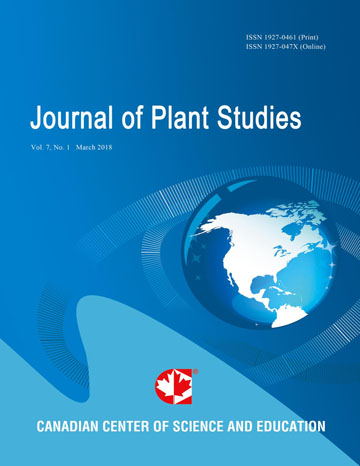Effects of Root-trimming and Cutting-heights on Growth Performance of Potted Native Warm-season Grasses
- Vitalis Temu
- David Johnson
- Maru Kering
Abstract
Mechanized transplanting of native warm-season grass (NWSG) seedlings raised in biodegradable strip-cups may require trimming outgrown and entwined roots to facilitate individual placement and complete root covering. During establishment, mowing is often used to reduce weed competition and promote tillering. In two randomized complete block split-split-plot design experiments, effects of root-trimming and cutting-height on growth and biomass production of potted NWSGs [big bluestem (BB, Andropogon gerardii Vitman), eastern gamagrass (GG, Tripsacum dactyloides L.), indiangrass (IG, Sorghastrum nutans L.), and switchgrass (SG, Panicum virgatum L.)] were assessed. Six-week old seedlings were transplanted, with or without root-trimming, and four of each type and species, assigned to 10-, 15-, or 20-cm cutting-height. All plants were fertilized uniformly and watered sufficiently. After a 7-d adjustment period, plants were clipped to 10 cm which promoted tillering. A three-week regrowth was then allowed before the first of three forage harvests, at assigned cutting-heights. Plant heights were recorded every two weeks after transplanting and on each harvest date. Data were analyzed for effects of root-trimming, cutting-height, and species. Root-trimming had no effect on the parameters. Cutting-height had no effect on plant heights except for second GG and SG regrowths, and/or the third BB and SG. Cutting-height affected only SG forage biomass significantly (P < 0.05) during year1 and every species during year2 with 100%+ greater values at the 20- than the 10-cm. All 20-cm average growth rates and belowground biomass in year2 were greater (P < 0.001) than the 10-cm by > 100%, but with similar root:total biomass ratios. Overall, species yield increased in the order; IG<BB<GG<SG. With adequate soil moisture and fertility, results indicate that root-trimming may not affect growth or forage biomass of NWSGs during establishment. Mowing NWSGs, during establishment, for up to three 20-cm cuts at ≥ 3-week intervals, may not impact recovery growth or belowground biomass, negatively. Results from field studies are required ahead of practical establishment management recommendations.
 PDF
PDF
